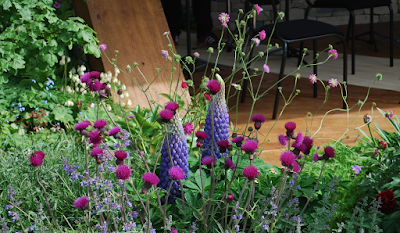Whether you have outdoor space or not, a windowbox lets you see your gardening endeavours from inside the house, and if you plant the right specimens, you can create your own wildlife watch, with flying visits from bees and butterflies.
Watch your windows
If you have a casement window, you might be better off positioning your windowbox below the windowsill, or you're in danger of knocking off your containers or decapitating your plants. You can work around this, by having a box on one side, or planting low-growers.
Choose your container
First, measure the width and depth of your windowsill to see what size to buy, and check that the sill is level enough to support a window-box.

Having just redecorated with white walls, I went for the
Socker white metal windowbox, £12 from Ikea. (I'm not using the hanger as my box can stand directly on the windowsill.)
If you're filling your box with flowerpots, you don't need to drill drainage holes, but if you're filling it with soil and planting directly into that, you do. If you don't have a drill, you can make holes in a plastic windowbox with a pointed implement such as a screwdriver, and some persistence.
And to avoid water trickling down the side of the house, or dripping on heads, it's also best to add a 'windowbox saucer' underneath. Mine is a black plastic
'trough tray', £2.92 from B&Q.
Pick your plants
As what's in the box will be visible from inside, go for contrasting or co-ordinating colours, up to you. For minimum maintenance, choose plants with a long flowering period. I've gone for scabious, compact lilac-blue flowerheads on tall, airy stems – one at each end – and golden yellow small-flowered petunias in the middle. (I've also tucked a couple of oxalis bulbs into a little space, but they're quite old so I'm not holding my breath.)
Scabious attracts pollinating insects (a bumble-bee landed on one of mine as I picked it up in the garden centre), and flower into September.
Work out how deep the plant needs to be inside the box; the soil level needs to be a little way below the rim. Add a layer of soil (I used John Innes peat-free with Miracle-Gro) to suit the biggest plants, tip them out and place them in the box. Fill around the edges with compost and press down to avoid air pockets. Add soil to a level suitable for the smaller plants, prise them out of their little plastic pots, position and fill around them with compost.
Water once the box is in position – it will be heavy – and keep an eye on it. Water a couple of times a week; poke a finger into the soil to see if it's getting dry. You'll need to do this even if it rains, as the building's walls shelter the box and it will stay amazingly dry. Deadhead (pull off dead flowers) to encourage more flowers. Here's the finished box in position.















